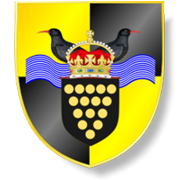Moorings and Anchor Chains
Moorings and Anchor Chains
The best choice for anchoring and mooring chain is short link chain. This is excluding stud chain, the heaviest chain and the strongest of chains as well as being the most flexible. By definition short link chain has a link of outside dimensions not exceeding five (5) times the material diameter in length and three point five (3.5) times in width necessitating te fitting of large end links by the manufacturer. It should be noted that these are maximum dimensions only and if a chain is needed to fit a windlass gypsy wheel it is unlikely that a short link chain will be suitable. Calibrated chain is designed to be used in a windlass, a manufacturing process involving making the chain deliberately short and the stretching it to its final dimensions.
Additional Components.
There is a wide range of other components which could be used in a mooring system and it is important to ensure that those used are of the equivalent strength of the chain. Using components which will fit the chain, with no regards to reletive strengths is all to common. As an example, given similar materials, a conventional shackle which will fit directly into short link chain can at best be only about half the strength of the chain, Compatibility of materials is vital too – the problem of dissimilar materials and electrolysis are only to well known.
Shackles.
By far the most popular shackles are dees and bows. Dee shackles are usual where two components are to be connected. whereas Bow Shackles are most suitable as three way connectors. Needles to say, all shackle Pins should be ‘moused’ using galvanized seizing wire.
Swivels.
There are various designs available and the user should ensure that the swivel chosen will except correct size shackles or shackle pin. Live shackles, there are two (2) popular types: the chain swivel for joining two (2) components and mooring swivels for joining three (3). Mooring swivels are designed to take a shackle pin at one (1) end and a shackle at the other.
Maintenance.
Although maintenance should be based on regular inspection, the precise procedure to be followed for any mooring depends on local conditions. If a mooring is exposed to strong tidal conditions and rough weather it will naturally wear more quickly. Normal wear an tear is not, however, the only cause of damage to mooring components, Corrosion, erosion and electrolysis can all be responsible for rapid and dramatic removal of metal. Consequently moorings on new sites need to be monitored carefully until a wear pattern can be established.
If possible moorings should be lifted for winter storage, or alternatively the riser maybe sunk and marked with a buoy. Either of these procedures can double a mooring life. Another useful tip is to position the swivel, which wears rapidly, at the top of the riser, where it can be inspected in situ. Finally, no time should be lost in making an inspection of a mooring where movement has been detected or suspected.
The degree of wear that can be safely permitted before replacement, again varies with individual circumstances. A ground chain will often be far larger than strength requirements dictate, as it is brought primarily for its wieght. Risers, however, have to be supported by a buoy and so tend to be nearer to the minimum acceptable size. As a guide ond should now allow more that fifteen (15) percent reduction below the chain diameter. Remember that the ends wear more rapidly. badly rusted a chain should never be used, particularly if the surface has been removed to expose the grain of the metal.
information supplied by Seaware Ltd, Truro
